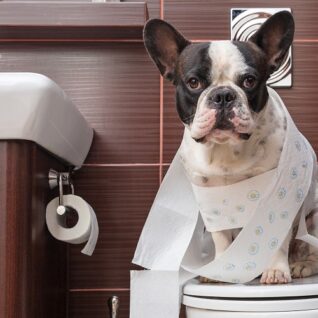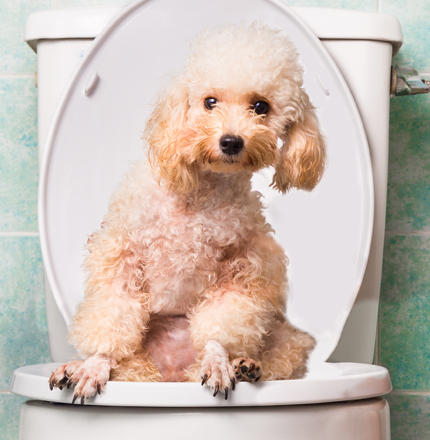Just how do you actually feel on the subject of Why you should never flush dog poop down the toilet?

When it involves getting rid of waste, particularly animal waste, many individuals usually resort to the convenient option of flushing it down the toilet. Nonetheless, this apparently very easy option can have major consequences for the environment and public health. In this write-up, we'll check out why flushing animal waste down the commode is a bad concept and give alternate techniques for correct disposal.
Introduction
Appropriate waste disposal is crucial for maintaining environmental sustainability and public health. While it may seem safe to flush animal waste down the bathroom, it can lead to different issues, both for the setting and human health.
Dangers of flushing pet waste
Ecological influence
Purging animal waste introduces unsafe bacteria and virus right into waterways, which can adversely influence marine ecosystems. These microorganisms can infect water resources and injury marine life, disrupting fragile ecological communities.
Public health worries
Animal waste contains dangerous bacteria such as E. coli and Salmonella, which can posture serious health and wellness threats to humans. Purging pet waste down the bathroom can infect water materials, bring about the spread of diseases and infections.
Alternatives to flushing
As opposed to purging animal waste down the bathroom, there are numerous alternative disposal techniques that are more eco-friendly and sanitary.
Composting
Composting animal waste is an environment-friendly method to dispose of it. By composting, organic matter is broken down right into nutrient-rich dirt, which can be utilized to fertilize gardens and plants.
Landfill disposal
Getting rid of pet waste in a landfill is an additional alternative. While not as environmentally friendly as composting, it is a more secure alternative to flushing, as it stops the contamination of water sources.
Family pet garbage disposal systems
There are customized pet dog garbage disposal systems available that securely and hygienically deal with animal waste. These systems typically use enzymes to break down waste and remove smells.
Steps to appropriate animal waste disposal
To make certain appropriate disposal of pet waste, follow these actions:
Scooping and getting waste
Consistently scoop and bag pet waste utilizing eco-friendly bags. This avoids waste from contaminating the setting.
Utilizing designated waste containers
Dispose of bagged pet waste in marked waste bins, such as garden compost bins or garbage dump bins. Avoid flushing it more info down the toilet in all expenses.
Cleaning up litter boxes and pet locations regularly
Regularly clean litter boxes and pet locations to prevent the build-up of waste and bacteria. Usage pet-safe cleaning products to keep hygiene.
Advantages of correct disposal techniques
Taking on proper disposal techniques for pet waste supplies several advantages:
Minimized environmental pollution
Proper disposal methods lower the risk of environmental pollution, securing rivers and ecosystems from contamination
Lessened danger of water contamination.
By preventing flushing pet waste down the commode, the danger of water contamination is dramatically reduced, safeguarding public health.
Improved sanitation and health
Correct disposal techniques promote better cleanliness and health, creating a much safer environment for both human beings and animals.
Verdict
Finally, purging animal waste down the toilet is harmful to the atmosphere and public health. By embracing alternative disposal approaches and complying with proper waste management methods, we can minimize the unfavorable impact of pet waste and contribute to a cleaner, healthier earth.
What To Do With Dog Poo – The Do's And Don'ts Of Disposing Of Faeces
Dog poo bins
Some councils provide dedicated dog waste bins in popular dog-walking areas that can take dog poo that has been bagged but you can legally dispose of dog waste in any public litter bin, as long as it is securely bagged. This also applies to your wheelie bin at home.
Do not flush
Water companies do not recommend flushing dog faeces down the toilet because certain parasites can survive the water processing treatment and are potentially harmful to humans. You should also never consider flushing dog poo that has been bagged down the toilet as the bags will not break down and instead create severe blockages in the sewage system.
In the woods
The Forestry Commission promotes a ‘stick and flick’ method for dealing with waste in the woods. This means finding a stick and using it to flick any poo from off the path so that it is out of the way of other walkers. You could also bury it as long as it is not in an area where there might be livestock.
Livestock
Parasites found in dog poo can be transmitted to livestock if they inadvertently eat infected faeces that has been left on grazing land. This could result in the death of sheep or abortion in cattle so you should always make sure you pick up your dog’s waste in fields where livestock could be present.

Regularly clean litter boxes and pet locations to prevent the build-up of waste and bacteria. Usage pet-safe cleaning products to keep hygiene.
Advantages of correct disposal techniques
Taking on proper disposal techniques for pet waste supplies several advantages:
Minimized environmental pollution
Proper disposal methods lower the risk of environmental pollution, securing rivers and ecosystems from contamination
Lessened danger of water contamination.
By preventing flushing pet waste down the commode, the danger of water contamination is dramatically reduced, safeguarding public health.
Improved sanitation and health
Correct disposal techniques promote better cleanliness and health, creating a much safer environment for both human beings and animals.
Verdict
Finally, purging animal waste down the toilet is harmful to the atmosphere and public health. By embracing alternative disposal approaches and complying with proper waste management methods, we can minimize the unfavorable impact of pet waste and contribute to a cleaner, healthier earth.
What To Do With Dog Poo – The Do's And Don'ts Of Disposing Of Faeces
Dog poo bins
Some councils provide dedicated dog waste bins in popular dog-walking areas that can take dog poo that has been bagged but you can legally dispose of dog waste in any public litter bin, as long as it is securely bagged. This also applies to your wheelie bin at home.
Do not flush
Water companies do not recommend flushing dog faeces down the toilet because certain parasites can survive the water processing treatment and are potentially harmful to humans. You should also never consider flushing dog poo that has been bagged down the toilet as the bags will not break down and instead create severe blockages in the sewage system.
In the woods
The Forestry Commission promotes a ‘stick and flick’ method for dealing with waste in the woods. This means finding a stick and using it to flick any poo from off the path so that it is out of the way of other walkers. You could also bury it as long as it is not in an area where there might be livestock.
Livestock
Parasites found in dog poo can be transmitted to livestock if they inadvertently eat infected faeces that has been left on grazing land. This could result in the death of sheep or abortion in cattle so you should always make sure you pick up your dog’s waste in fields where livestock could be present.

As a reader about , I figured sharing that excerpt was worth the trouble. Those who enjoyed reading our article kindly remember to share it. I treasure reading our article about Should you flush animal waste down the toilet.
Appointment